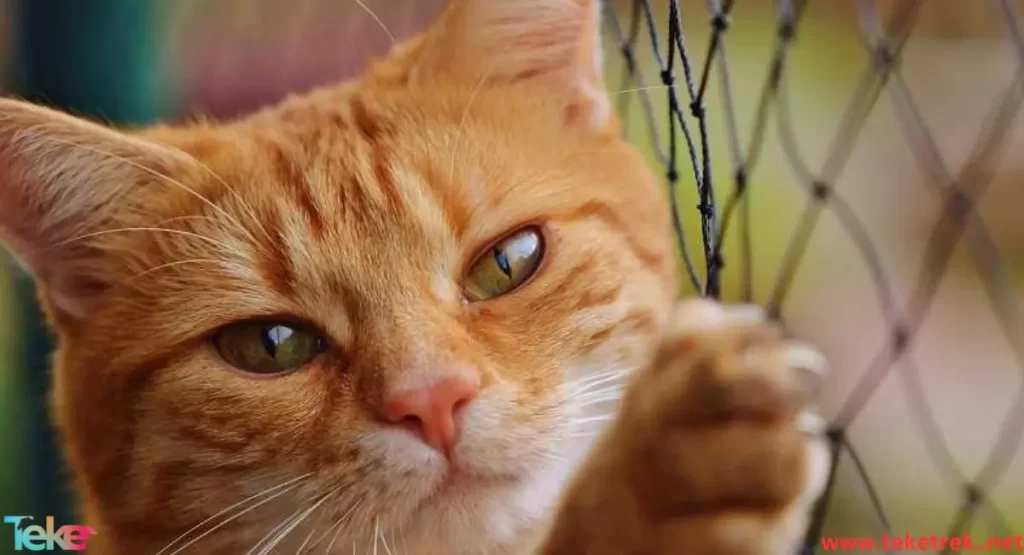If you’re a cat owner or a cat lover, this question might have crossed your mind: why do cats’ eyes water, and how can it be treated? If you have noticed that your cat’s eyes sometimes tear up, you might wonder whether it’s due to fatigue, sadness, or just a common phenomenon. In this article from teketrek we will explore the main reasons behind cats’ tears and the ways to treat them.

What Are Cats’ Tears?
Cats’ tears are a natural phenomenon that occurs when the tear glands in a cat’s eyes secrete tears. This is a normal immune response that helps cats expel dirt and impurities from their eyes. Additionally, the tear glands produce tears that mix with other fluids in the eye to provide constant moisture and protection.
Causes of Cats’ Tears
There are many reasons why cats tear up. Some of these causes are normal and not a cause for concern, while others may require a visit to the veterinarian. Here are the main causes:
- Eye Cleaning: Tear secretions help clean a cat’s eyes of dust, dirt, and pollutants they may be exposed to.
- Allergies or Infection: Allergies or infections in a cat’s eyes can lead to excessive tearing, causing the phenomenon of cat tears.
- Conjunctivitis: This condition, also known as Conjunctivitis, is a common cause of cat tears.
- Health Issues: As mentioned earlier, cat tears might indicate an underlying health problem that requires a vet’s consultation. For example, cats may produce excessive tears in response to certain health issues like infectious diseases or tumors.
- Environmental Changes: Exposure to environmental changes such as air pollutants or being around a smoker can irritate the tear glands, causing them to produce more tears.
- Structural Problems: Tears in cats may also indicate structural issues, such as abnormal eye anatomy or deformities, leading to problems in tear drainage.
- Temperature Changes: Environmental factors like cold air or high heat may affect tear production and drainage.
If the tearing continues, it’s important to consult a veterinarian.
Symptoms of Cats’ Tears
The phenomenon of cat tears can be easily noticed, as excessive tear production may cause red or brown stains under the eyes. Here are the main symptoms associated with cat tears:
- Redness: You may notice redness around the eyes due to irritation, allergies, or swelling.
- Itching: Cats with watery eyes might frequently rub their eyes due to the irritation.
- Eye Discharge: Sometimes, eye discharge accompanies the tearing and may appear slippery or purulent.
- Skin Looseness Around the Eyes: The skin around the eyes might appear swollen or loose due to swelling.
- Scratching the Eyes: Cats may scratch their eyes while rubbing them, which can lead to injury.
- Hair Loss Around the Eyes: Excessive tearing may cause fur loss around the eyes.
- Corneal Ulceration: Excessive tearing can damage the cornea, leading to ulceration.

When to Consult a Veterinarian
Many cases of cat tears are not a cause for concern and do not require medical consultation, especially if the tearing is shortlived and resolves on its own. However, there are certain situations where you should consult a veterinarian for appropriate treatment:
- Persistent irritation.
- Unusual discharge.
- Continuous redness.
Treatment for Cats’ Tears
When you consult a veterinarian, they will assess the situation and decide whether treatment is necessary. Here are some treatments the vet might suggest:
- Eye Drops: The veterinarian may prescribe eye drops containing antibiotics or antihistamines to reduce irritation and swelling.
- Eye Ointments: In some cases, the vet may prescribe eye ointments with antibiotics to treat cat tears.
- Cleaning the Cat’s Eyes: A special solution can be used to clean the cat’s eyes of dirt, pollutants, and secretions.
- Antibiotics: These are prescribed if the tearing is due to an infection.
- Removing Allergens: If an allergy is causing the cat’s tears, the key solution is to eliminate the allergen. Identifying and removing the cause of the allergy from the environment is crucial.
- Elizabethan Collar: This collar is used to prevent the cat from rubbing or scratching its eyes, which helps maintain the effectiveness of eye treatments.
In conclusion, most cases of cat tears are not a cause for concern and may simply be a transient condition that resolves on its own. However, if you notice any worrying or unusual symptoms, you should consult a veterinarian to prescribe the appropriate treatment.
المصادر





